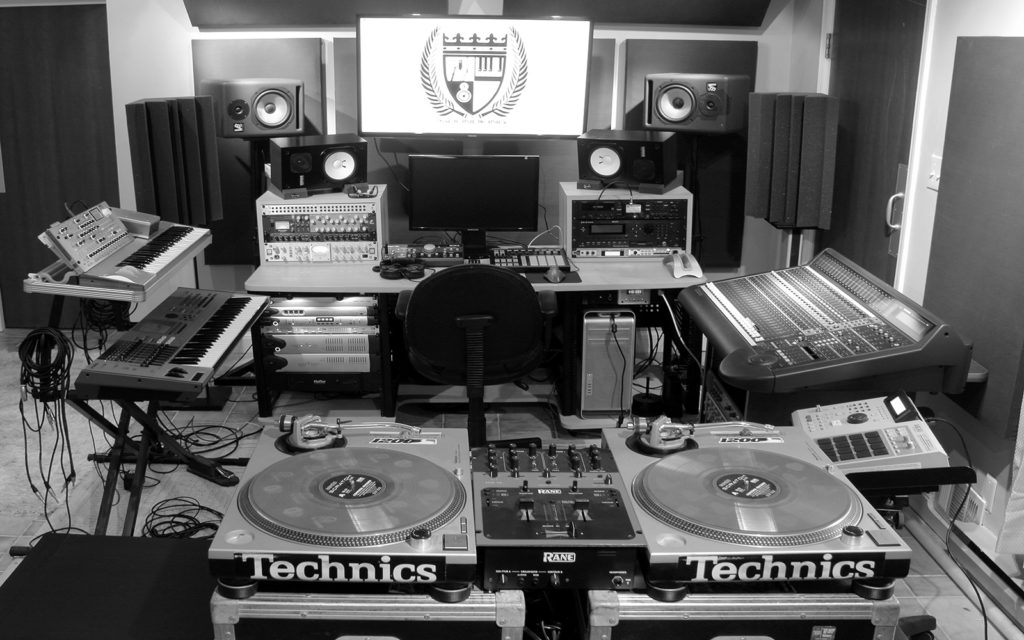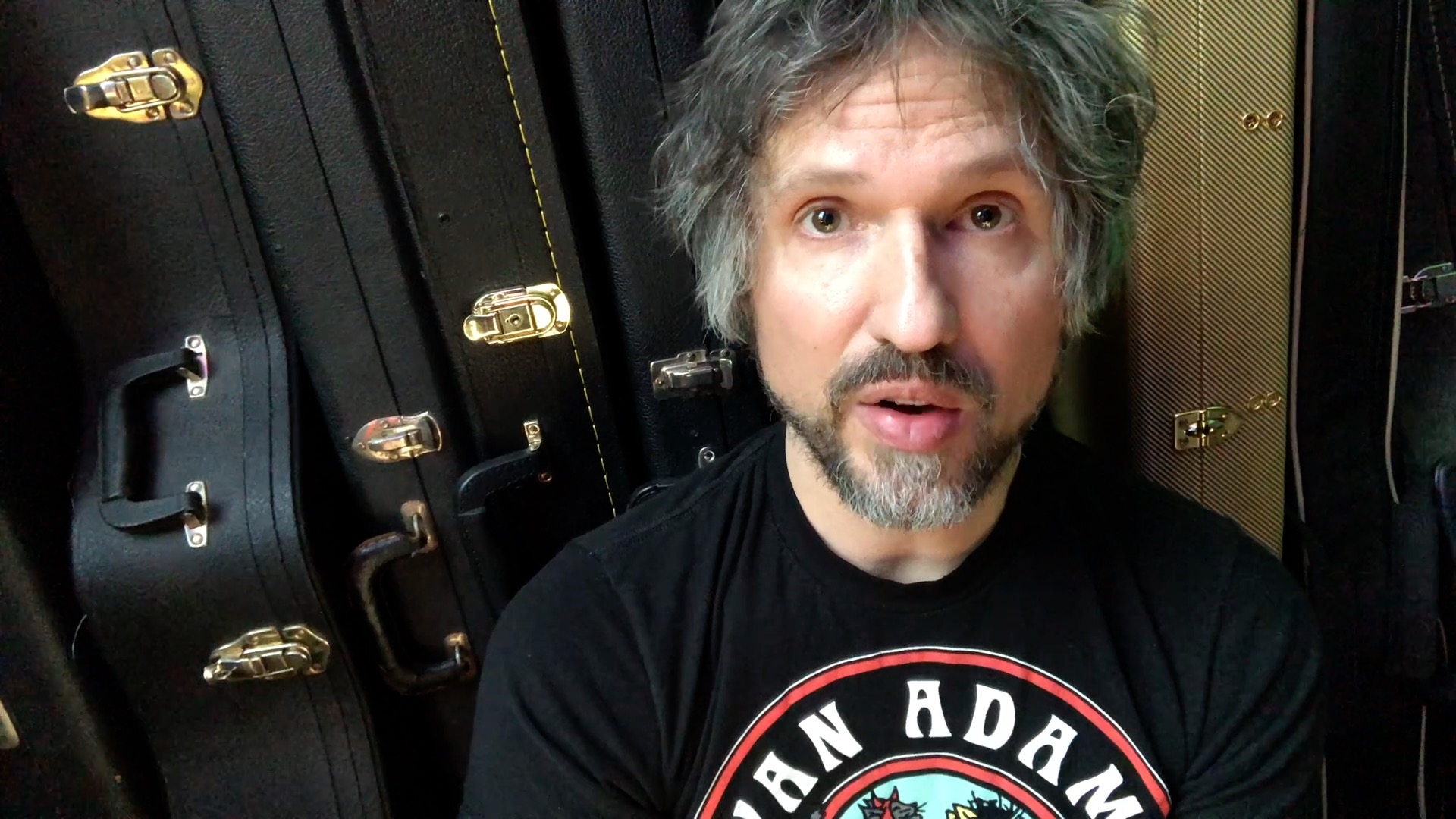By T. Perry Bowers
I used to tell people “it’s not about the gear; it’s about how you use it.” That’s true, but let’s face it, you need to have some gear.
Now I have top quality gear, I like to think it’s a combination of decent gear and skill.
So, what are the most important pieces you should look for in a studio? And what do you need to build your own arsenal?
 Microphones:
Microphones:
See this article about the difference between a condenser and a dynamic mic link.
A large diaphragm condenser microphone is essential if you’re going to record any vocals at all. You don’t need to spend a ton of money, but the closer you get to a thousand bucks, the closer you’ll be to having a microphone to compete with the big name studios.
If you don’t have a thousand to spend, don’t worry; there are some damn good condenser microphones for around three hundred. My recommendation is go to your local audio store (Guitar Center pro lab) and test a few of them.
Most music stores will allow you to return equipment after a few days, so if you can’t try the microphone in the store, take it back to your studio and test it. If it doesn’t do the trick return it and try again.
If the microphone you’re buying is mainly for your voice, make sure it sounds good on you. If it’s for clients, ensure it sounds good on high, low, thin, and full voices. Some large diaphragm microphones are good for male voices while others are better for female.
If you can only purchase one large diaphragm microphone, make sure it will suit your studio’s needs. It is probably the most important piece of gear in a studio.
Again, it all depends on budget, but you will need a handful of dynamic mics as well – for snares, guitar amps, toms, etc. The Sure SM57 is probably the most versatile, bomb proof and respected dynamic microphone ever made. You won’t go wrong with two or three SM57s in your locker.
If you’re going to be recording full drum sets, you’ll need a large diaphragm dynamic for the kick drum. You won’t get the right low end sound without one. Almost any one designed for a kick drum will be sufficient.
Pre-amplifiers
A pre-amp powers your microphone. It sends the signal from the microphone to your board and into your software (or tape machine).
The quality of the pre-amp has a big impact on how the signal sounds. The type and quality of the materials used and the craftsmanship is what makes or breaks a pre-amp.
The same rule applies to pre-amps as to microphones, the closer you get to spending a thousand dollars, the closer you’ll be to the big boy’s studios. But if you’re smart, three hundred will buy you something useable.
Research and test. It’s the only way. I could recommend a few, but you may not have my sonic sensibility. You may use your gear differently than I do. It all comes down to preference. As you research and test you will immediately hear what sounds good to you and what doesn’t.
Most mixing boards have pre-amps built into them but nowadays most of us don’t even use a board. We just go directly into our software.
If you’re recording mainly vocals (hip-hop/rap studios), you’ll need one good pre-amp. If you’re recording full bands with drums, you might need fifteen to twenty. A decent mixing board will provide you with the pre-amps you need, but you might want one really nice outboard1 piece for vocals.
DAW
A digital workstation (DAW) is the main software you use to record. Pro Tools, Logic or Garage Band are options. Most Pro Tools licenses come with some sort of interface2. For Logic, you will need a third party interface.
Your DAW is the heart of everything you do while recording, editing and mixing. Do as much research as you can before you settle on your favorite DAW.
Pro Tools is the industry standard and many engineers choose it because of that. In addition to the convenience of interfacing easily with other studios and clients who use it, Pro Tools also has the most plug-in3 options.
Mixing Board
If your system centers on a DAW, you may not need or want a mixing board. Your mouse will be your main way to control and manipulate your sound.
Pro Tools (Avid) make an elaborate interface that works like a huge computer mouse. It allows you to control faders, auxiliary channels, pan etc just like you would on a large mixing console.
In a real mixing console, the audio signal goes through the channel strip. In the new interface desks it controls a signal already in your computer.
Most modern recording setups don’t center on a mixing board. If there is a mixing board in the setup, it is usually to make use of the mic pre-amps or else it is just a huge glorified computer mouse.
Headphones and Speakers
Headphones and speakers are a very important part of your setup. They teach us how to record and mix in all environments. Money spent on headphones and speakers is money well spent.
I recommend buying a pair of speakers that give you a flat response. I have a pair of Yamaha NS-10s in my studio. They were the industry standard for a long time. In a way they still are as many studios seek them out because they are such a good reference.
As you mix with speakers or headphones you can extrapolate how your mixes will sound on other systems. You can mix on any old pair of speakers, but the higher quality they are, the easier and more pleasant it will be to your ears.
As you get further down the track in building your studio, you’ll realize this is just the tip of the iceberg. These are the glamorous things. Connectors, cables, power supplies etc are the boring stuff that will blow out your budget.
Once you have planned out and priced all the gear you need, add another few hundred for the peripheral things. It gets ridiculous fast. With a little planning and forethought though, you will at least have a ballpark number.
- Outboard – a piece of gear that sits “outside” the main mixing board. The signal is routed to outboard gear to obtain a specific sound or effect on a sound source.
- Interface – a piece of outboard gear that allows microphones, headphones and speakers to interface with the software.
- Plug-ins – software purchased separately from the DAW that “plugs in” to the DAW. Compression, equalization, reverb, delay and amp simulators are some examples of types of plug-ins.

